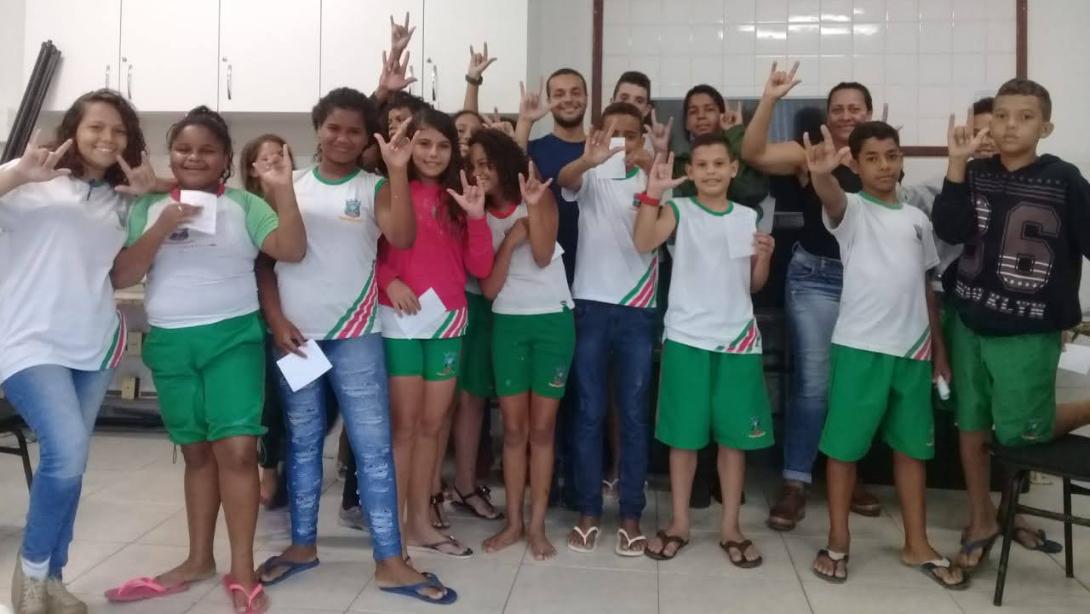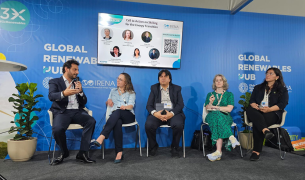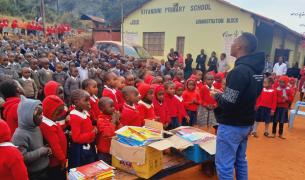Teaching everyone to dance: How Brazilian Sign Language turned my math class into a community

In 2019, as a participant in Ensina Brasil’s leadership development program, I walked into my first middle school classroom ready to teach math and left that day committed to inclusive education. Ensina Brasil shaped my mindset as a teacher‑leader who learns from students first.
Day one: Meeting Iasmyn
On my very first day, I met Iasmyn, a deaf student. I could introduce myself, share my sign name, ask for hers, and exchange simple questions about her vacation and everyday matters. Even with this basic vocabulary, I felt both the excitement of genuinely connecting and the frustration of not being able to go further. I believed then, and believe even more strongly now, that breaking communication barriers is the first step to building real relationships. I was comfortable with basic Libras (Brazilian Sign Language), but teaching math concepts in Libras? That was a different challenge.
So I did my homework. I researched, experimented, and quickly made the Hand Talk app part of my daily practice. It translates Portuguese into Libras and gave me a bridge when my vocabulary fell short. That small tool helped me plan instruction, preview vocabulary, and check my own clarity before I ever stepped in front of the board.
April 24: From access to belonging
On April 24, Brazil’s National Day of Libras, I paused math across all my classes. Instead of equations, we learned the basics of Libras together: the alphabet, greetings, simple classroom phrases. After that day, colleagues began adding Libras warm‑ups to their lessons, and, together with school leadership, we advocated for a dedicated Libras interpreter and a deaf Libras teacher. Within weeks, every class in the school had a weekly Libras session. The culture shifted: students started signing to greet each other in the hallway; teachers added signs to anchor charts; parents asked their kids to teach them at home.
There’s a line I love: “Diversity is being invited to the party; inclusion is being asked to dance” (Vernā Myers). That day wasn’t just about Iasmyn having access to content; it was about inviting her to dance and designing the whole party so she could lead.
Building a movement, not a moment
In my second year, alongside other participants from Ensina Brasil’s program, I convened an Inclusive Education Working Group. For 12 months, I coordinated 30 educators from across our Brazilian network. We started each session by naming the realities in our classrooms, the messy, human details that rarely make it into training manuals and we built from there.
Over the year we delivered six focused training sessions and supported an online learning hub. More than 200 educators drew on those resources to plan for students with disabilities, multilingual learners, and others who are often left at the margins. The most meaningful feedback we received wasn’t about tools; it was about confidence: teachers felt more able to include every student, every day.
What learning Libras taught me about inclusion
- Inclusion is a design choice: When we teach the whole class the “language of access,” we move from accommodations to community.
- Tech is a bridge, not a destination: Apps helped me prepare to teach; relationships helped my students learn.
- Leadership is collective, not positional: Real inclusion grew when teachers, students, and families shared ownership, each leading from where they were to make access to everyone's responsibility.
- Belonging accelerates learning: When students see their identities centered, participation and persistence rise. That’s the heart of inclusive education as defined by global education leaders: identifying barriers and removing them so all learners can participate and achieve together.
Try this next Monday
If you’re a teacher wondering where to start, here are four moves that worked for us:
- Teach a mini‑lesson on access: Spend 15 minutes on sign language (or the relevant access tool for your students). Normalize learning it together.
- Co‑plan with students: Ask, “What helps you participate?” Invite students like Iasmyn to help teach vocabulary or co‑create anchor signs.
- Stack supports: Combine a real‑time interpreter or peer signer with visual supports, sentence frames, and pre‑taught vocabulary.
- Build a peer learning circle: Gather 5–10 colleagues for short, recurring clinics where you focus on one lesson or one solution. Share artifacts in a simple online folder so early‑career teachers can grab and go.
My why
I joined Ensina Brasil in 2019 to transform learning with my students, not for them. Inclusive education isn’t a special initiative I run on certain days; it’s how I plan, teach, and reflect. And it started with one student, one app, one day when math paused and community began. If diversity is the invitation, inclusion is the dance floor we build wide enough for everyone, with the music turned up so students like Iasmyn can lead the steps.
Call to action: Choose one access move this week. Teach 10 signs. Co‑plan one assessment with a student who’s been on the margins. Then invite a colleague to try it, too. Movements begin in classrooms and they grow when we dance together.



